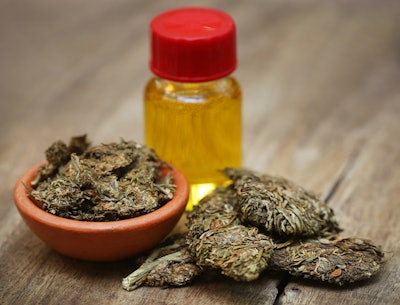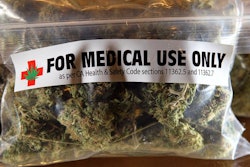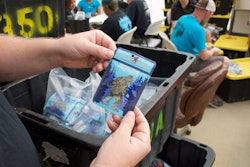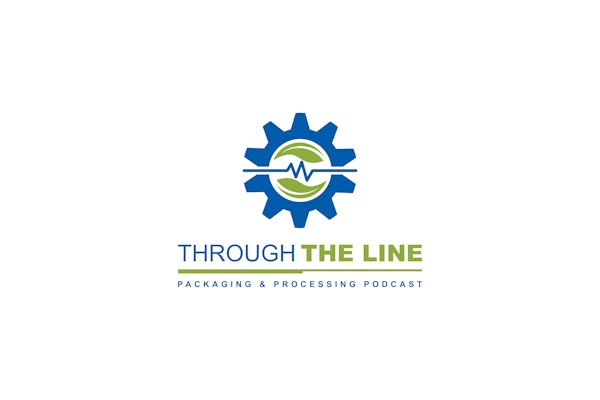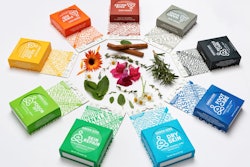While medical marijuana is legal in 29 states and the District of Columbia, there is still much to be determined in the packaging realm. We talk with Todd Meussling, National Accounts Manager for Presto’s Fresh-Lock® Slider Zipper, about how flexible packaging is poised to benefit the industry.
HCP: What are you seeing in terms of the medical marijuana landscape? How is the medical community receptive to the topic?
Todd Meussling: What was once taboo has become accepted. Medical marijuana continues to gain public approval. A 2017 Yahoo/Marist poll found 83 percent of Americans believe medical cannabis should be legalized and 49 percent feel the same about recreational use.
The medical community is also getting behind the possible benefits. While talking with people in the cannabis industry, I’ve learned many of them came from the medical field, including areas such as oncology. Used as medication, cannabis has the potential to be prescribed for a variety of ailments, from pain relief and insomnia to epilepsy and Parkinson’s disease.
Respected medical organizations in states where medical marijuana is legal are opening up to cannabis. For example, after Minnesota legalized non-smokable medical marijuana, the Mayo Clinic began allowing doctors to prescribe it for approved physical and mental health issues.
Medical marijuana is legal in 29 states as well as Washington, D.C., and eight states have legalized recreational use. From a federal perspective, the future of the medical and recreational marijuana industry is still being decided. However, legalization on the state level has created a market targeted to reach an estimated $17 billion per year by 2021.
HCP: What challenges are you seeing in the medical marijuana industry?
TM: As with any market experiencing rapid growth, there are challenges that come with scaling up. The flexible packaging industry is poised to support cannabis companies by providing valuable solutions, helping them comply with current and future regulations. The cannabis industry needs to project an image of accountability and responsibility, and packagers can help it do just that.
How specifically is flexible packaging going to play a role?
TM: Flexible packaging options, such as the standup pouch, offer the same advantages to medical marijuana as they do to other markets. Films provide an adequate barrier for retaining freshness and controlling odor. There are of course, significant source reduction benefits. We can eliminate the box, the canister, and the label, reducing waste and offering cost savings.
The billboarding benefits of flexible packaging provide a unique opportunity to communicate important information to the consumer. That includes dosing instructions, warning labels, information about the strain, and ingredients.
There are bound to be increased regulations surrounding both medical and recreational cannabis, and label requirements will certainly be part of following government guidelines. Each state has different regulations surrounding packaging and labeling, and flexible packaging is in a position to help marijuana processors and dispensaries stay in compliance.
The industry is evolving rapidly, becoming acquainted with automation. There are also many new delivery methods growing in popularity. How can packaging suppliers help marijuana producers?
TM: Originally, we classified this market as “the wild west” when it came to packaging. Companies were all over the board with package types, formats, and structures. They really didn’t have a strong sense as to what they needed. Now, those needs are much clearer.
Efficiency in the supply chain will become more important as this market expands, and packagers can play a part in continuous improvement by introducing automation into the process. We are seeing growing demand for automated packaging services, including fill-and-seal pouching equipment.
Marijuana companies need access to those with packaging expertise. That includes sourcing the right films and other materials for pouch-making as well as creating unique packaging that goes beyond the standard pouch. There is less of a focus on the sale of the flower (unprocessed buds) and growth in demand for other delivery methods, which will require packaging solutions.
What are the unique packaging challenges and features of edible marijuana products?
TM: Perhaps the biggest opportunity for flexible packaging of medical marijuana comes from edibles. In Colorado, sales of edibles and concentrates have been surging, outpacing growth of inhalable products. This trend is expected to occur in other states as well.
Many patients prefer consuming cannabis this way. Plus, states like New York and Minnesota have specifically legalized a 30-day supply of non-smokable marijuana only.
Medical marijuana edibles are both a food product and a pharmaceutical. The flexible packaging industry understands how to package food and, as edible marijuana companies expand, they’ll need better solutions. A bakery making cookies with cannabis-infused butter will want to package its products in a way that provides the same functionality as packaged cookies in a grocery store.
As a food product, medical marijuana edibles stand to benefit in the same ways as typical merchandise. It protects and extends shelf life when resealablity is added, it’s easier for consumers and retailers to store, and it’s lightweight, making it more convenient for shippers to transport.
What’s the relationship between flexible packaging and child-resistance?
TM: Whether it’s edible products, concentrates, or flowers/buds, it will be crucial to identify ways to protect children from accessing medical marijuana. At one point, I recall some establishments sending customers out of the dispensary with a stapled paper exit bag and calling it “sealed.”
However, the cannabis industry is moving towards accountability and responsibility, and safer packaging will play a crucial role.
A child’s potential attraction to edibles, such as gummies and other items that look like treats, is obvious. Providing a child-resistant packaging solution will be paramount as the medical cannabis industry experiences increased scrutiny. States already have laws surrounding child safety. At some point, marijuana processors will no doubt need to comply with the Poison Prevention Packaging Act (PPPA).
Marijuana flexible packaging needed a child-resistant solution. That’s one way Fresh-Lock® Slider Zipper’s Child-Guard™ slider is being used. It’s a closure system designed to meet PPPA requirements of child-resistance. Child-Guard™ was initially developed as a solution for soluble unit dose (SUD) products in laundry. Yet, cannabis is one of the fastest-growing applications for Child-Guard™ and products like it.
What should marijuana companies look out for when choosing child-resistant packaging solutions?
TM: Many packages claiming child-resistance are shipped from overseas and may not have been properly tested. To be recognized as child-resistant, a package must undergo a series of tests in which 85 percent of children under the age of five are unable to open it and 90 percent of senior adults are able to open it within a set time.
It’s also critical to realize that the closure is the entryway to a product, but it’s not the only factor considered in child resistance. A child-resistant package must also be made with materials that keep kids out, even when they’re biting and pulling. Packagers can help by offering tear-proof and puncture-resistant films, which will be needed in addition to child-resistant closures.
Any closing thoughts on flexible packaging for marijuana?
TM: Regardless of personal opinions on marijuana, the reality is that the industry’s remarkable growth makes it an opportunity we shouldn’t ignore.
Let’s assume projections of a 17-billion-dollar cannabis industry by 2021 are accurate. That would exceed the total revenue of all 32 NFL teams in 2015 ($15 billion) and the annual retail sales of natural cheese products in the U.S. ($12.1 billion). This is a market that needs flexible packaging, because we can offer unique solutions to meet the needs of specific cannabis products, processors, and dispensaries.
